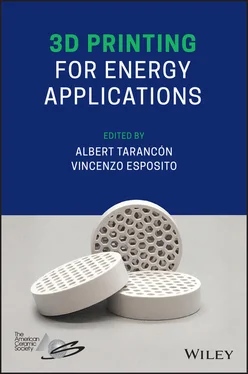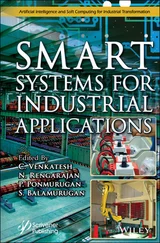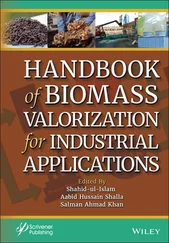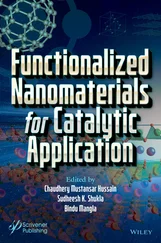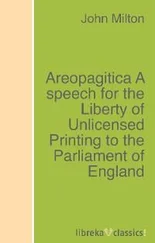53 53 Stavropoulos, P., Foteinopoulos, P., Papacharalampopoulos, A., & Bikas, H. (2018). Addressing the challenges for the industrial application of additive manufacturing: Towards a hybrid solution. International Journal of Lightweight Materials and Manufacture, 1(3), 157–168. doi:10.1016/j.ijlmm.2018.07.002
54 54 Lundin, C. D. (1982). Dissimilar metal welds: Transition joints literature review. Welding Journal (Miami, Fla), 61(2), 58‐s–63‐s.
55 55 Chen, N., Khan, H. A., Wan, Z., Lippert, J., Sun, H., Shang, S.‐L., . . . Li, J. (2020). Microstructural characteristics and crack formation in additively manufactured bimetal material of 316L stainless steel and Inconel 625. Additive Manufacturing, 32, 101037‐1–101037‐16. doi:10.1016/j.addma.2020.101037
56 56 Anderson, R., Terrell, J., Schneider, J., Thompson, S., & Gradl, P. (2019). Characteristics of bi‐metallic interfaces formed during direct energy deposition additive manufacturing processing. Metallurgical and Materials Transactions B: Process Metallurgy and Materials Processing Science, 50(4), 1921–1930. doi:10.1007/s11663‐019‐01612‐1
57 57 Li, P., Gong, Y., Xu, Y., Qi, Y., Sun, Y., & Zhang, H. (2019). Inconel‐steel functionally bimetal materials by hybrid directed energy deposition and thermal milling: Microstructure and mechanical properties. Archives of Civil and Mechanical Engineering, 19(3), 820–831. doi:10.1016/j.acme.2019.03.002
58 58 Shang, C., Wang, C., Xu, G., Li, C., & You, J. (2019). Laser additive manufacturing of TA15: Inconel 718 bimetallic structure via Nb/Cu multi‐interlayer. Vacuum, 169(July), 108888. doi:10.1016/j.vacuum.2019.108888
59 59 Savitha, U., Srinivas, V., Jagan Reddy, G., Gokhale, A. A., & Sundararaman, M. (2018). Additive laser deposition of YSZ on Ni base superalloy for thermal barrier application. Surface and Coatings Technology, 354, 257–267. doi:10.1016/j.surfcoat.2018.08.089
60 60 Zuback, J. S., Palmer, T. A., & DebRoy, T. (2019). Additive manufacturing of functionally graded transition joints between ferritic and austenitic alloys. Journal of Alloys and Compounds, 770, 995–1003. doi:10.1016/j.jallcom.2018.08.197
61 61 Lu, Y., Huang, Y., & Wu, J. (2018). Laser additive manufacturing of structural‐graded bulk metallic glass. Journal of Alloys and Compounds, 766, 506–510. doi:10.1016/j.jallcom.2018.06.259
62 62 Liu, Y., Liang, C., Liu, W., Ma, Y., Liu, C., & Zhang, C. (2018). Dilution of Al and V through laser powder deposition enables a continuously compositionally Ti/Ti6Al4V graded structure. Journal of Alloys and Compounds, 763, 376–383. doi:10.1016/j.jallcom.2018.05.289
63 63 Bobbio, L. D., Otis, R. A., Borgonia, J. P., Dillon, R. P., Shapiro, A. A., Liu, Z.‐K., & Beese, A. M. (2017). Additive manufacturing of a functionally graded material from Ti‐6Al‐4V to Invar: Experimental characterization and thermodynamic calculations. Acta Materialia, 127, 133–142. doi:10.1016/j.actamat.2016.12.070
64 64 Nartu, M. S. K. K. Y., Mantri, S. A., Pantawane, M. V., Ho, Y.‐H., McWilliams, B., Cho, K., . . . Banerjee, R. (2020). In situ reactions during direct laser deposition of Ti‐B4C composites. Scripta Materialia, 183, 28–32. doi:10.1016/j.scriptamat.2020.03.021
65 65 Traxel, K. D., & Bandyopadhyay, A. (2020). Naturally architected microstructures in structural materials via additive manufacturing. Additive Manufacturing, 34, 101243‐1–101243‐14. doi:10.1016/j.addma.2020.101243
66 66 Lanfant, B., Bär, F., Mohanta, A., & Leparoux, M. (2019). Fabrication of metal matrix composite by laser metal deposition‐a new process approach by direct dry injection of nanopowders. Materials, 12(21), 3584‐1–3584‐16. doi:10.3390/ma12213584
67 67 Hu, Y., Cong, W., Wang, X., Li, Y., Ning, F., & Wang, H. (2018). Laser deposition‐additive manufacturing of TiB‐Ti composites with novel three‐dimensional quasi‐continuous network microstructure: Effects on strengthening and toughening. Composites Part B: Engineering, 133, 91–100. doi:10.1016/j.compositesb.2017.09.019
68 68 Li, F., Gao, Z., Li, L., & Chen, Y. (2016). Microstructural study of MMC layers produced by combining wire and coaxial WC powder feeding in laser direct metal deposition. Optics and Laser Technology, 77, 134–143. doi:10.1016/j.optlastec.2015.09.018
69 69 Hofmann, D. C., Roberts, S., Otis, R., Kolodziejska, J., Dillon, R. P., Suh, J.‐O., . . . Borgonia, J.‐P. (2014). Developing gradient metal alloys through radial deposition additive manufacturing. Scientific Reports, 4, 5357‐1–5357‐8. doi:10.1038/srep05357
70 70 Heer, B., & Bandyopadhyay, A. (2018). Compositionally graded magnetic‐nonmagnetic bimetallic structure using laser engineered net shaping. Materials Letters, 216, 16–19. doi:10.1016/j.matlet.2017.12.129
71 71 Akinlabi, E. T., & Akinlabi, S. A. (2014). Friction stir welding of dissimilar metals. In M.‐K. Besharati‐Givi & P. Asadi (Eds.), Advances in Friction‐Stir Welding and Processing. Cambridge: Woodhead Publishing. doi:10.1533/9780857094551.241
72 72 Domack, M. S., & Baughman, J. M. (2005). Development of nickel‐titanium graded composition components. Rapid Prototyping Journal, 11(1), 41–51. doi:10.1108/13552540510573383
73 73 Dilip, J. J. S., & Ram, G. D. J. (2013). Microstructure evolution in aluminum alloy AA 2014 during multi‐layer friction deposition. Materials Characterization, 86, 146–151.
74 74 Yin, S., Cavaliere, P., Aldwell, B., Jenkins, R., Liao, H., Li, W., & Lupoi, R. (2018). Cold spray additive manufacturing and repair: Fundamentals and applications. Additive Manufacturing, 21, 628–650.
75 75 Yin, S., Yan, X., Chen, C., Jenkins, R., Liu, M., & Lupoi, R. (2018). Hybrid additive manufacturing of Al‐Ti6Al4V functionally graded materials with selective laser melting and cold spraying. Journal of Materials Processing Technology, 255, 650–655. doi:10.1016/j.jmatprotec.2018.01.015
76 76 Nadimpalli, V. K., & Nagy, P. B. (2018). Designing an in‐situ ultrasonic nondestructive evaluation system for ultrasonic additive manufacturing. AIP Conference Proceedings, 1949, 020005‐1–020005‐9. doi:10.1063/1.5031502
77 77 Nadimpalli, V. K., Yang, L., & Nagy, P. B. (2018). In‐situ interfacial quality assessment of Ultrasonic Additive Manufacturing components using ultrasonic NDE. NDT and E International, 93, 117–130. doi:10.1016/j.ndteint.2017.10.004
78 78 Sridharan, N., Wolcott, P., Dapino, M., & Babu, S. S. S. S. (2017). Microstructure and mechanical property characterisation of aluminium–steel joints fabricated using ultrasonic additive manufacturing. Science and Technology of Welding and Joining, 22(5), 373–380. doi:10.1080/13621718.2016.1249644
79 79 Wolcott, P. J. J., Sridharan, N., Babu, S. S. S., Miriyev, A., Frage, N., & Dapino, M. J. J. (2016). Characterisation of Al–Ti dissimilar material joints fabricated using ultrasonic additive manufacturing. Science and Technology of Welding and Joining, 21(2), 114–123. doi:10.1179/1362171815Y.0000000072
80 80 Stucker, B. E., Obielodan, J. O., Ceylan, A., & Murr, L. E. (2010). Multi‐material bonding in ultrasonic consolidation. Rapid Prototyping Journal, 16(3), 180–188. doi:10.1108/13552541011034843
81 81 Kumar, S., & Kruth, J.‐P. (2010). Composites by rapid prototyping technology. Materials and Design, 31(2), 850–856. doi:10.1016/j.matdes.2009.07.045
82 82 Guo, H., Gingerich, M. B., Headings, L. M., Hahnlen, R., & Dapino, M. J. (2019). Joining of carbon fiber and aluminum using ultrasonic additive manufacturing (UAM). Composite Structures, 208, 180–188. doi:10.1016/j.compstruct.2018.10.004
83 83 Yang, Y., Janaki Ram, G. D. D., & Stucker, B. E. E. (2009). Bond formation and fiber embedment during ultrasonic consolidation. Journal of Materials Processing Technology, 209(10), 4915–4924. doi:10.1016/j.jmatprotec.2009.01.014
Читать дальше
